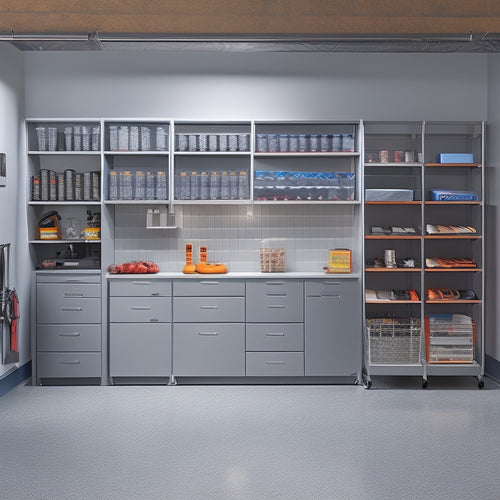
Ultimate Dexterity Test for Precision and Skill
Share
Dexterity is a multifaceted skill that requires the intricate coordination of eye-hand-finger movements, demanding precision, speed, and accuracy to excel in complex tasks. The Minnesota Complete Manipulation and Dexterity Test is a standardized assessment that evaluates eye-hand-finger coordination, providing precise scoring for accurate assessments. This test facilitates the identification of strengths and weaknesses, allowing for targeted interventions and personalized training plans. With its applications in various fields, including surgery, craftsmanship, sports, and music, this test is essential for optimizing performance. By grasping the intricacies of dexterity, individuals can realize their full potential and discover the nuances of their fine motor skills.
Key Takeaways
• The Minnesota Complete Manipulation and Dexterity Test is a standardized tool for assessing eye-hand-finger coordination and fine motor skills.
• Precision testing evaluates dexterity quantitatively, identifying strengths and weaknesses for targeted interventions.
• The test provides a comprehensive evaluation of hand-eye coordination, speed, and accuracy for complex tasks.
• Results offer insights into fine motor skills and eye-hand coordination, enabling creation of personalized training plans.
• Identifying dominant hand and areas for improvement helps optimize performance in various fields, such as surgery, craftsmanship, and sports.
Understanding Dexterity and Precision
Dexterity, an essential aspect of human motor function, encompasses the intricate coordination of eye-hand-finger movements, requiring precision, speed, and accuracy to perform complex tasks.
This intricate relationship between hand-eye coordination and fine motor skills is important for executing precise movements. Precision testing is a critical component in evaluating an individual's dexterity, as it provides a quantitative measure of their skill level.
Through thorough skill evaluation, professionals can identify areas of strength and weakness, allowing for targeted interventions to improve overall dexterity. By understanding the complexities of dexterity and precision, individuals can refine their motor skills, leading to enhanced performance in various aspects of life, from everyday activities to professional pursuits.
Components and Test Administration
The Minnesota Complete Manipulation and Dexterity Test is an all-encompassing assessment tool comprised of two folding boards, 60 blocks, a carrying case, and a thorough manual, providing a standardized and efficient means of evaluating an individual's eye-hand-finger coordination and fine motor skills.
The test setup is designed to facilitate precise scoring, ensuring accurate assessments of dexterity and precision.
The test administration process is straightforward, allowing for efficient evaluation of an individual's skills.
The test is an essential tool for skill development and training, providing a holistic understanding of an individual's capabilities.
Interpreting Results and Applications
Once the test is administered, the results can be interpreted to provide valuable insights into an individual's fine motor skills and eye-hand coordination, which can then be applied to develop targeted training programs or interventions. Analyzing data from the test, professionals can identify specific areas of strength and weakness, enabling them to create personalized training plans to improve dexterity and precision.
| Aspect of Dexterity | Practical Application |
| Fine Motor Skills | Surgery, craftsmanship, and other precision-based occupations |
| Eye-Hand Coordination | Sports, music, and other activities requiring synchronization |
| Hand Dominance | Identifying dominant hand for best performance |
Frequently Asked Questions
Can the Test Be Used for People With Physical Disabilities?
The Minnesota Manual Dexterity Test is designed with accessible design in mind, allowing individuals with physical disabilities to participate. Inclusive norms guarantee accurate results, accommodating diverse abilities and promoting fair assessment.
Is the Test Available in Languages Other Than English?
Beyond linguistic borders, the Minnesota Manual Dexterity Test transcends language barriers, facilitating cultural adaptations to guarantee accessibility. While currently available in English, adaptations for diverse languages can be explored to bridge the gap for global users.
How Often Should the Test Be Administered to Track Progress?
To track progress, administer the test at regular frequency intervals, ideally every 2-3 months, to identify progress markers and adjust interventions accordingly, ensuring accurate assessments and targeted improvements in dexterity and precision skills.
Can the Test Be Used for Children and Adolescents?
As we navigate the domain of developmental assessments, can we truly gauge the dexterity of our youngest minds? Indeed, the Minnesota Manual Dexterity Test is suitable for children and adolescents, providing age norms and tracking progress against developmental milestones.
Is the Test Suitable for Use in Industrial or Workplace Settings?
In industrial settings, precise manual dexterity is vital for Workplace Safety. The Minnesota Manual Dexterity Test is suitable for evaluating employees' fine motor skills, hand-eye coordination, and precision, ensuring peak performance in Industrial Applications.
Related Posts
-

Building a Garage Storage System With Built-Ins
You're about to build a garage storage system with built-ins that fits your unique needs, starting by evaluating your...
-

What Size Rolling Storage Bin Do I Need
To determine the ideal size of your rolling storage bin, you'll need to measure your storage space accurately, consid...
-

Bin Garage Storage Ideas for Maximizing Space
You can greatly maximize your garage's storage space by utilizing vertical space with ceiling storage bins, stacking ...


